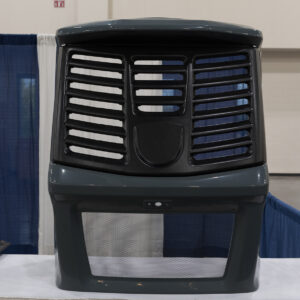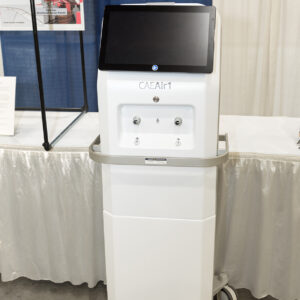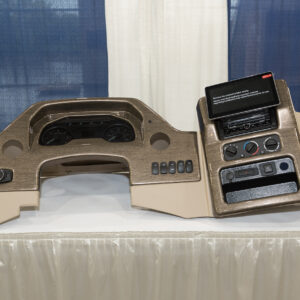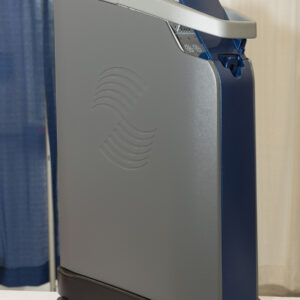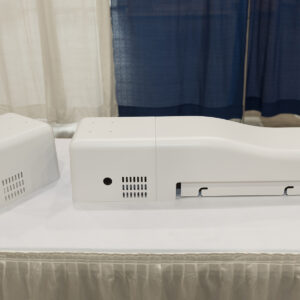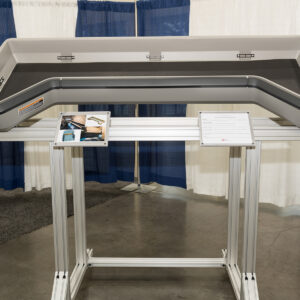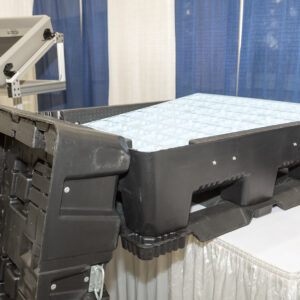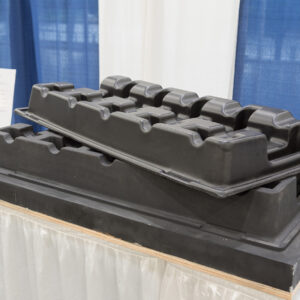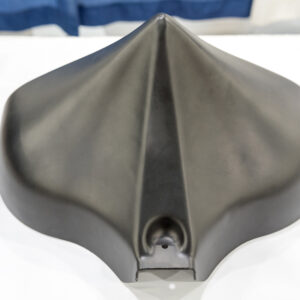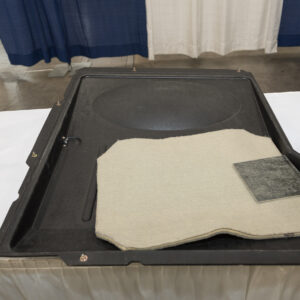Pressure Points: Thermoforming Awards Highlight Processing and Materials
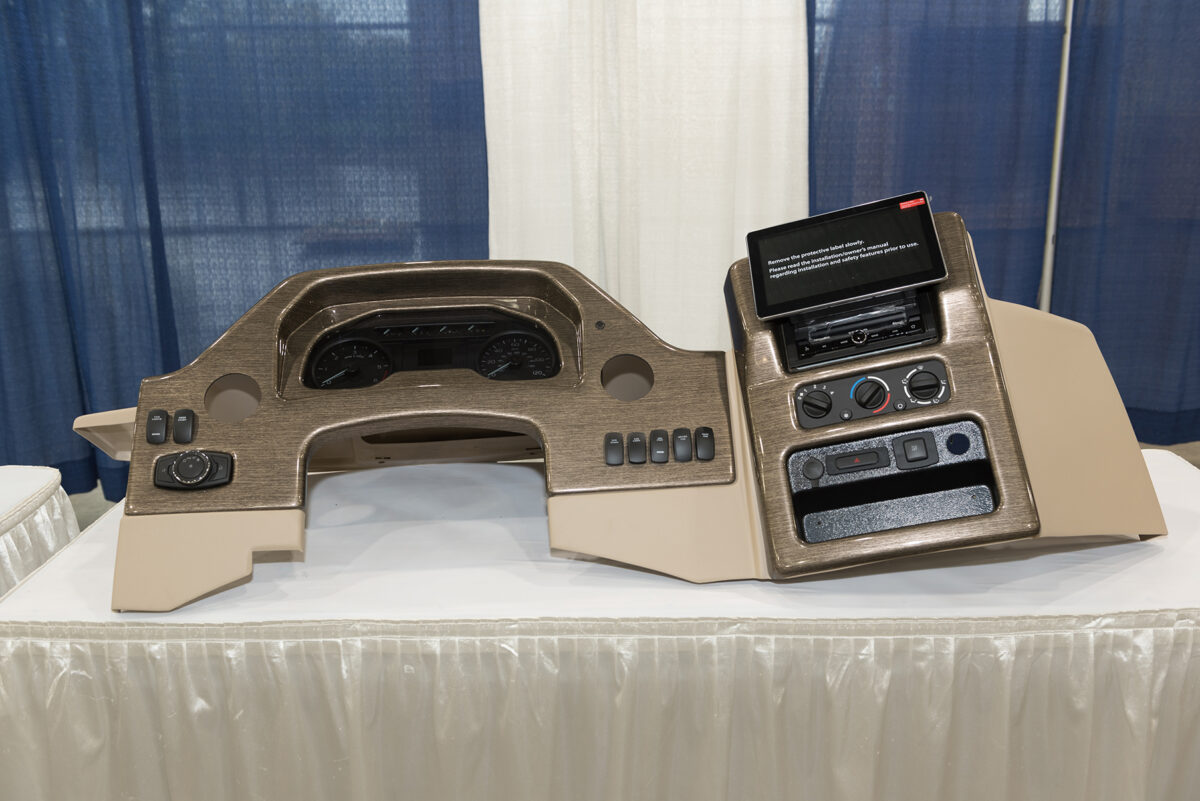
Winning parts in annual thermoforming competition highlight advances in process capabilities and materials
Ten parts representing a range of applications won awards at the SPE Thermoforming Division’s annual conference in Grand Rapids, Mich., last fall.
The event lived up to its theme of “Smart Manufacturing: Intelligently Forming the Future,” based on the size, complexity and applications of many winners and the processes in use. All major production techniques were in evidence among the winning entries—thermoforming, pressure forming and vacuum forming—and polymer choices included single- and some twin-sheet materials. Additionally, two examples of 3D-printed tooling received awards, an indication of the ongoing viability of this relatively low-cost, rapid tool-making process.
Following are the categories, winners and brief descriptions of their fabrication methods and end-use applications. (All photos are courtesy of Dallager Photography.)
People’s Choice Award
Silver Award for Parts Produced With Automation and New Technology
The competition’s lone dual-award winner is a rear engine enclosure assembly for agricultural sprayers produced by Hagie Manufacturing of Clarion, Iowa. Produced by Plastics Unlimited of Preston, Iowa, the part is one of about a dozen different exterior engine enclosure panels that fit together to create styling, air flow and improved serviceability. The parts had to pass different tests including 2,000 hours of Xenon arc UV, accelerated weathering testing and high heat testing to resist machinery heat from engine, turbos and radiators. They also had to pass tests to ensure that they could withstand everyday abuse, including scratches and dozens of aggressive chemicals that the sprayer applies on crops.
The main enclosure material is custom colored Hagie gray—a smooth high-gloss ABS with an acrylic cap and starting thickness of 0.236 inches. It is bonded with glass fiber using Plastics Unlimited’s patented TEC (Toolless Engineered Composites) process. The glass fiber increases the rigidity, durability and temperatures the assembly can withstand. The grill is thermoformed from black high-temperature ABS/PC-blended haircell textured material with a low-gloss acrylic film with a starting thickness of 0.240 inches.
Hagie was struggling to service the enclosures with a previous design because of their huge size. The new parts overcome this problem and offer much tighter tolerances and better fit.
One of the most impressive aspects of this project was the extremely quick turnaround. Plastics Unlimited produced about 40 parts of each one of the dozen different exterior engine enclosure panels, all of the patterns, aluminum tools, trim fixtures and assembly fixtures in about two months.
The design features for hidden mounting brackets, allowing for easy, quick, simple assembly by the OEM. Plastics Unlimited also adds screens to improve airflow to reduce engine overheating. Engineers worked with Hagie to redesign the parts for thermoforming by eliminating die locks and to improve forming and trimming conditions.
The thermoformed parts of the assembly are formed on single cavity cast aluminum tools with temperate control.
Gold Award for Vacuum Forming
A ventilator made by Plastique Art, Sainte-Claire, Quebec, Canada, features an enclosure assembly of eight thermoformed parts which house a high-end intensive care unit ventilator. In response to the COVID-19 pandemic, the producer’s customer was awarded a contract of 10,000 units to be manufactured on an urgent basis.
To meet the extraordinary challenge of designing and manufacturing an enclosure for a new ventilator in only three weeks with the intention to be production ready after approval, all parts were vacuum formed to provide the best aesthetic and functionality within this time frame.
Since other components of the device were being developed simultaneously, daily collaboration with the OEM and designer was required to make recommendations and adjustments while keeping to the deadline. Plastique Art’s focus was to optimize the design for manufacturability while achieving the best fit of the parts, knowing that they had to be thermoformed on male urethane molds which would also be utilized for production.
The capacity of the supplier to deliver custom color sheets for prototypes in less than a week and on short notice for mass production was critical to the success of the project.
Assembly of the enclosure is designed to minimize attachment points, to reduce the assembly time required for the OEM and to limit contact points with the metallic substructure and avoid interferences that could come from unknown tolerance stack-ups of all other components.
By making the tools in-house with a staff dedicated to this project, Plastique Art was able to meet the 10-day lead time for having 11 devices ready for certification by a health agency.
Upon final approval of the device, the processor ramped up production quickly to make 10,000 devices in less than 16 weeks. For this, multi-cavity, temperature-controlled, aluminum molds were required for all parts. Even though they were made quickly, Plastique Art still had to make some 2,000 parts from urethane tools and maintain consistency throughout the program.
Silver Award for Vacuum Forming
Hammer Plastics of Mishawaka, Ind., produces this dashboard assembly for use in Class A motorhomes. The base is a custom color of low-gloss ABS. Decorative A brush aluminum decorative film is applied with a polyurethane cap gloss surface. The tooling layout and design accommodates differentiation in shrink factors for the various components of the dash. The part is shipped as a complete assembly.
Gold Award for Pressure Forming
A multi-part medical cart, made by Ray Products of Ontario, Calif., includes 12 aesthetic and repeatable pressure formed parts. The assembly includes a combination of molded-in color and painted parts. With the cart originally manufactured using a urethane cast process, pressure forming was able to improve part-to-part repeatability and aesthetics without impacting the overall design of the cart.
The previous method of urethane casting required painting every part and limited production quantities to 25 pieces at a time. The urethane parts also required a 100 percent inspection rate using a full assembly check fixture and approved parts being kitted and shipped together as a unique set.
After switching to pressure forming, the medical device manufacturer was able to significantly reduce total project costs, improve its manufacturing speed, increase part durability and was guaranteed part-to-part repeatability without the need of unique sets. The pressure forming process provided the customer with a total return on investment within the first 50 units produced. There were, additionally, no issues meeting current and future customer demand.
By manufacturing the unit with pressure forming and using various molded-in features, including several undercuts, Ray Products was able to significantly reduce the number of purchased components that were needed to mount the urethane parts. This allowed for a significant reduction in total assembly time by the medical customer along with maintenance of the tight tolerances the customer specified.
Silver Award for Pressure Forming
The covers for an automatic paint dispenser, formed by Profile Plastics of Lake Bluff, Ill., was a two-part project that met the target price points of the customer and served as a durable yet easily removable cosmetic cover for an automatic paint dispenser.
Two machined, water-cooled aluminum tools with acid-etched texture were used in the forming process. This provided a solution for the customer, who was highly price-sensitive yet wanted to meet functional, cosmetic, field service and durability requirements with the covers. The final two-part solution conformed to the customer’s specifications.
Three challenges were addressed in designing a durable, yet easily removable part.
- For servicing the underlying equipment, the customer wanted a rigid yet highly cosmetic assembly that could be removed easily by service technicians without being damaged. Through extensive collaboration with the customer’s design team, Profile Plastics developed a cover system that can be conveniently removed and easily put back on securely. The design includes hidden fastening points to the frame.
- Achieving desired thickness with minimum material. The deeper part geometry combined with the customer’s cost constraints demanded working with a minimal starting gauge. Profile Plastics developed the necessary processes to achieve part-cost requirements without sacrificing the part rigidity and performance that was required in the field. Several gauge and process trials were undertaken to achieve this goal.
- Surface Durability. The part must withstand an environment in which excess paint from use needs to be removed with harsh cleaning agents. A color-matched material was selected to eliminate the need for a painted finish on the part, which could be damaged from normal use in the field.
Gold Award for Twin-Sheet
An over-the-road storage shelf for the sleeper area of a long-haul truck cab is manufactured by Wilbert Plastics, White Bear Lake, Minn., by twin-sheet thermoforming and completed using internal foam, hardware assembly and electrical wiring.
Here’s how the process works. Mold surfaces are engraved with two different textures to meet the customer’s styling needs. The shelf body is then edge trimmed along with mounting bracket openings, and then brackets and internal plates for structure are installed prior to foaming. A low-pressure, two-part foam is added to fill the inner cavity of the shelf to add structure. Mounting bracket locations are confirmed at this stage. Tie-down bracket holes, wiring openings and pockets for the switch and lights are then trimmed in a robotic cell. Final assembly involves installation of the tie-down brackets, wiring of lights, power input and switch, and surface mat, and then prepared for shipment.
The result, Wilbert Plastics says, is a structurally sound, aesthetic storage shelf that the customer uses as an option to replace the upper sleeping bunks in over-the-road truck cabs.
Silver Award for Twin-Sheet
TriEnda Holdings of Portage, Wis., developed a battery cell cover assembly that secures inner trays filled with fragile lithium-ion batteries.
Both the top and bottom clamshell pieces are twin-sheet thermoformed components that are durable, yet light weight compared to the prior wooden solution.
The material in use is 500-gauge high-density polyethylene formed on smooth tool surfaces with varying sheet starting gauges and different tool depths between the base and top. Two aluminum production tools run concurrently, forming one full pack with each cycle. A total solution involves additional materials and processes such as foam and injection molded ABS trays.
The critical design requirements that have been achieved include long-lasting, impact-absorbing product protection from damage and short circuiting, pack weight reduction and elimination of expendable packaging that requires special fillers to prevent damage. Tested to U.S. Transportation Dept. and UN standards for over-the-road and airfreight shipments, TriEnda attributes the design’s success to the durability and flexibility of the HDPE outer shell.
Current practice is shipping batteries from overseas to the U.S. in wooden crates that are used for one or two shipments. The thermoformed solution can be used in many more return shipments, is fully recyclable and is readily accessible to an OEM’s robotics or manual handling.
Gold Award for 3D-Printed Tooling
Catalysis Additive Tooling of Columbus, Ohio, uses a 3D-printed tool, made with binder-jet technology, to thermoform pallets. The material formed over the tool is 0.250-inch HDPE and lasts for more than 1,000 parts.
The printed tool has many benefits over traditional metal. It only takes a week or two to manufacture, which gets it into the hands of customers twice as fast as a machined metal tool.
The tool is half the price of a metal tool. When creating a tool using 3D printing (or additive manufacturing), complexity isn’t dependent on machine time as with conventional subtractive manufacturing.
This tool is 100 percent porous, allowing it to pull a more consistent vacuum on parts. Despite its porosity, the tool has a 100 Ra surface finish. The combination of the two make for a clean, well-formed part. The addition of blowoff holes in areas with a little amount of draft ensures that parts come off smoothly without damage to the tool or part.
An innovative design on the underside of the tool utilizes the full capabilities of 3D printing for thermal management and strength. On a shuttle system, the tool can maintain a consistent 170°F.
The underside also doubles as a vacuum chamber. When paired with the porosity of the tool, a near-perfect pull on the material is possible.
The tool withstands thousands of parts. This means that its longevity isn’t dependent on price and lead time, which are major drawbacks of other tooling materials such as wood and plastics.
In summation, Catalysis Additive Tooling says, the tool is half the cost and half the production time of a metal version, porous, and so able to pull thousands of parts at a consistent temperature.
Silver Award for 3D-Printed Tooling
A guard used in industrial applications is produced from 3D-printed tooling by Plastics Unlimited, Preston, Iowa.
The starting material is smooth, black high-molecular-weight PE with a starting thickness of 0.187 inches. Plastics Unlimited says this is a great solution for the customer to decrease tooling cost and meet a tight timeline. One impressive part of this project was the extremely quick turnaround. Plastics Unlimited produced about 400 parts, as well as the tooling and trim fixture in about one month.
The design allows for hidden mounting brackets, which makes for easy and fast assembly. The thermoformed parts of the assembly are formed in three cavities.
Gold Award for Parts Produced With Automation and New Technology
The forward drip pan for the Boeing Chinook military helicopter replaces an aluminum pan. Formed by Hagans Plastics of Grand Prairie, Tex., the award-winner offers increased strength and weight reduction compared with aluminum.
The part is made using oil temperature-controlled matched-metal aluminum tooling. The pan material is a PEEK (polyetheretherketone)/Kevlar nonwoven fiber that must be formed in excess of 500°F. The pan was redesigned to include more head room for the navigator. Issues that were occurring included the current aluminum pan causing holes to appear in the helicopter skin due to vibration. The time it took to change out the current pan due to its ridged structure was reduced in half with the new design and material.
The PEEK/Kevlar material can be formed in a multitude of ways and thicknesses. It maintains a ridged perimeter while still having some flexibility throughout the center section. The material is, as well, resistant to all types of petroleum, oils and lubricants) after forming.
During the testing phase the material was not adversely affected by the high degree of vibration that occurs in helicopters. It also provides the strength needed for additional mounting points and quarter-turn fasteners. The weight reduction achieved with the new part was more than 4 pounds compared with the aluminum pan.
Prior to this project, the PEEK/Kevlar material had not been tested for forming. Hagans Plastics developed the process after many trials.
The pan has been approved for use in all new Chinook helicopters and in spares for existing helicopters.

